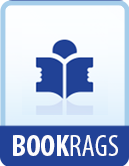When Isaac was three years old his mother married again, and he was given over to the charge of his maternal grandmother. While still a boy at school, his mechanical genius began to show itself, and he constructed various mechanisms, including a windmill, a water-clock, and a carriage put in motion by the person who sat in it. He was also fond of drawing, and wrote verses. Even at this age he began to take an interest in astronomy. In the yard of the house where he lived he traced the varying movements of the sun upon the walls of the buildings, and by means of fixed pins he marked out the hourly and half-hourly subdivisions.
At the age of fifteen his mother took him from school, and sent him to manage the farm and country business at Woolsthorpe, but farming and marketing did not interest him, and he showed such a passion for study that eventually he was sent back to school to prepare for Cambridge.
In the year 1660 Newton was admitted into Trinity College, Cambridge. His attention was first turned to the study of mathematics by a desire to inquire into the truth of judicial astrology, and he is said to have discovered the folly of that study by erecting a figure with the aid of one or two of the problems in Euclid. The propositions contained in Euclid he regarded as self-evident; and, without any preliminary study, he made himself master of Descartes’ “Geometry” by his genius and patient application. Dr. Wallis’s “Arithmetic of Infinites,” Sanderson’s “Logic,” and the “Optics” of Kepler, were among the books which he studied with care; and he is reported to have found himself more deeply versed in some branches of knowledge than the tutor who directed his studies.
In 1665 Newton took his Bachelor of Arts degree, and in 1666, in consequence of the breaking out of the plague, he retired to Woolsthorpe. In 1668 he took his Master of Arts degree, and was appointed to a senior fellowship. And in 1669 he was made Lucasian professor of mathematics.
During the years 1666-69, Newton was engaged in optical researches which culminated in his invention of the first reflecting telescope. On January 11, 1761, it was announced to the Royal Society that his reflecting telescope had been shown to the king, and had been examined by the president, Sir Robert Murray, Sir Paul Neale, and Sit Christopher Wren.
In the course of his optical researches, Newton discovered the different refrangibility of different rays of light, and in his professorial lectures during the years 1669, 1670, and 1671 he announced his discoveries; but not till 1672 did he communicate them to the Royal Society. No sooner were these discoveries given to the world than they were opposed with a degree of virulence and ignorance which have seldom been combined in scientific controversy. The most distinguished of his opponents were Robert Hooke and Huyghens. Both attacked his theory from the standpoint of the undulatory theory of light which they upheld.




